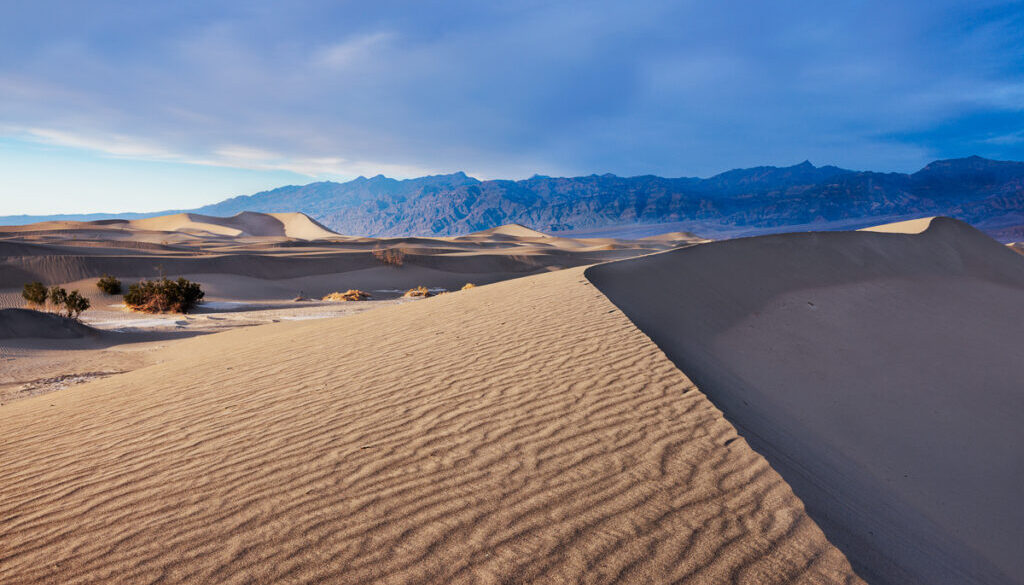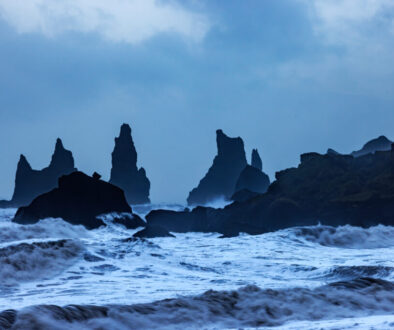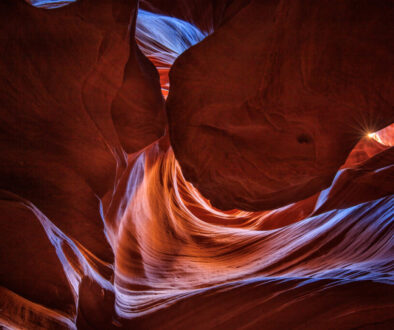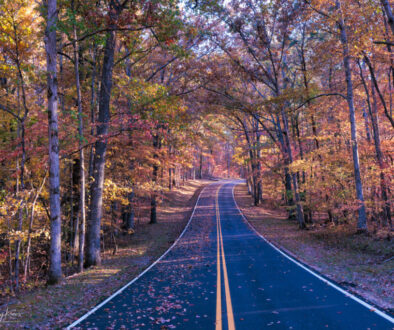Death Valley Perspectives
I have been to Death Valley several times now, and it’s an experience quite unlike any other given the vast size of the area, and distance between the photographic landmarks that are most popular. Some are quite busy, even in February, which is probably one of the least busy months to visit. If you spend much time at the popular overlooks and viewpoints, you’ll quickly learn that your photo opportunities will be filled with people who would rather be in the landscape than observe it. Such is probably the main reason why Photoshop has a select, edit and fill function. But it is possible to avoid some of these issues by locating areas not as popular, or not as well known with visitors and tourists.
First, planning is key when visiting any National Park. Make sure to check the National Park website for closures or other alerts affecting travel. At the time of this writing, the road to the Racetrack is closed, as is Scotty’s Castle.
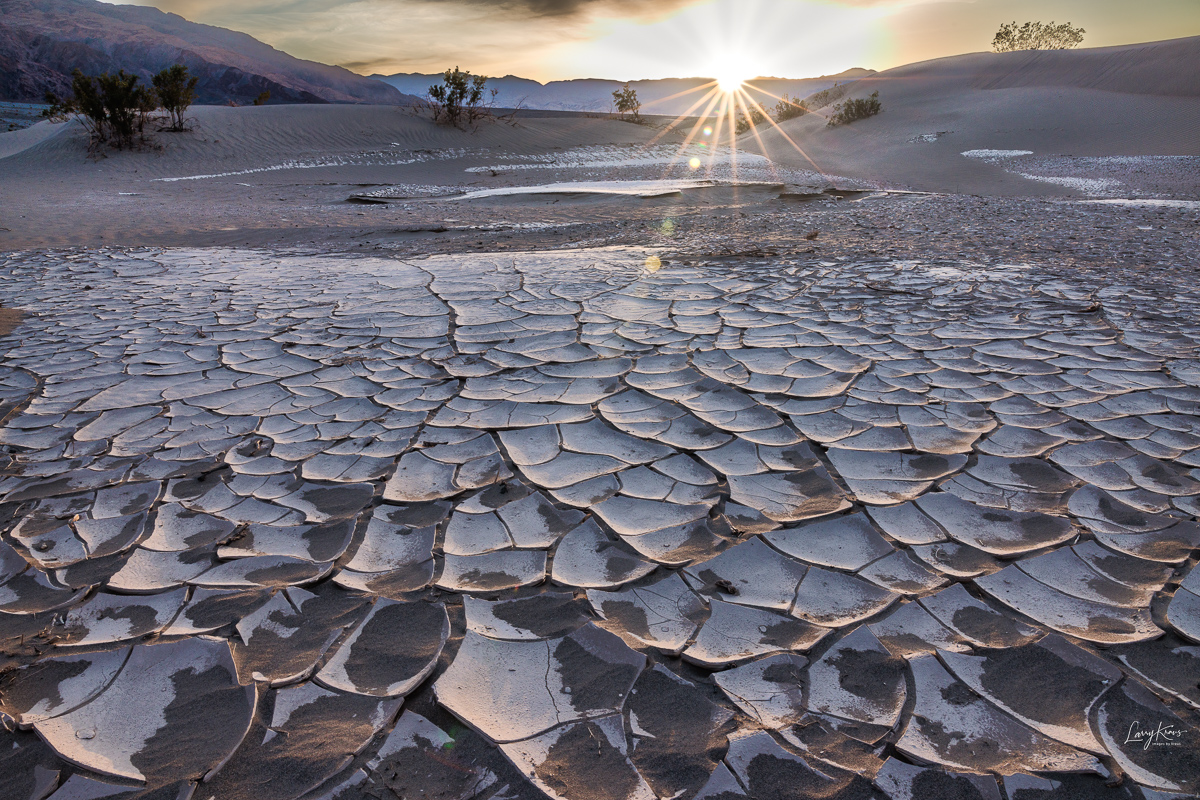
Sand Dune Mud Cracks
Whether coming into the park from Rhyolite, Nevada (Daylight Pass), or Pahrump, Nevada, you will end up on Highway 160. Highway 160 allows access to a lot that’s available in the Park, including the towns of Furnace Creek and Stovepipe Wells. Accommodations are available at both locations, and I’ve stayed at both, but Furnace Creek has the most amenities. It’s 24 miles between the two towns. Stovepipe Wells gives you immediate access to the Mesquite Sand Dunes, and once open, to routes going out to the Racetrack and Eureka Sand Dunes. Furnace Creek Is pivotal for Dante’s View, Zabriskie Point, 20 Mule Team Canyon, Golden Canyon, Badwater and the Artist’s Palette, among others.
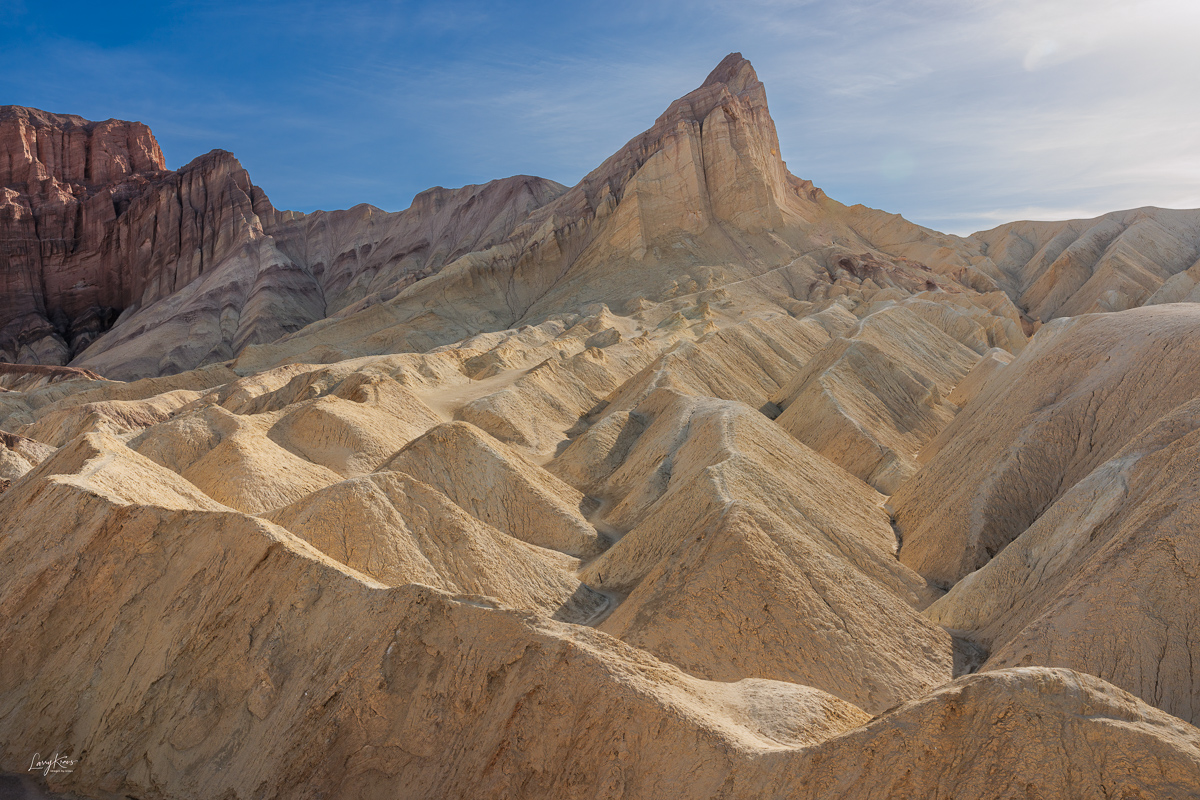
Golden Canyon – Manly Point
Locations for shooting beautiful sunrise and sunset photos abound in Death Valley, and hopefully you’ll have some good sky to complement your compositions. On my latest trip, we encountered heavy cloud cover both at sunrise and sunset, although camera sensors do a pretty good job with diffuse and oblique lighting. Eventually, clouds burn off somewhat by late morning or at dusk, and I was able to get some beautiful shots.
Finally, I want to share some little secrets I’ve learned for avoiding the crowds and keeping shoe prints and people out of your landscape and sand dune photos:
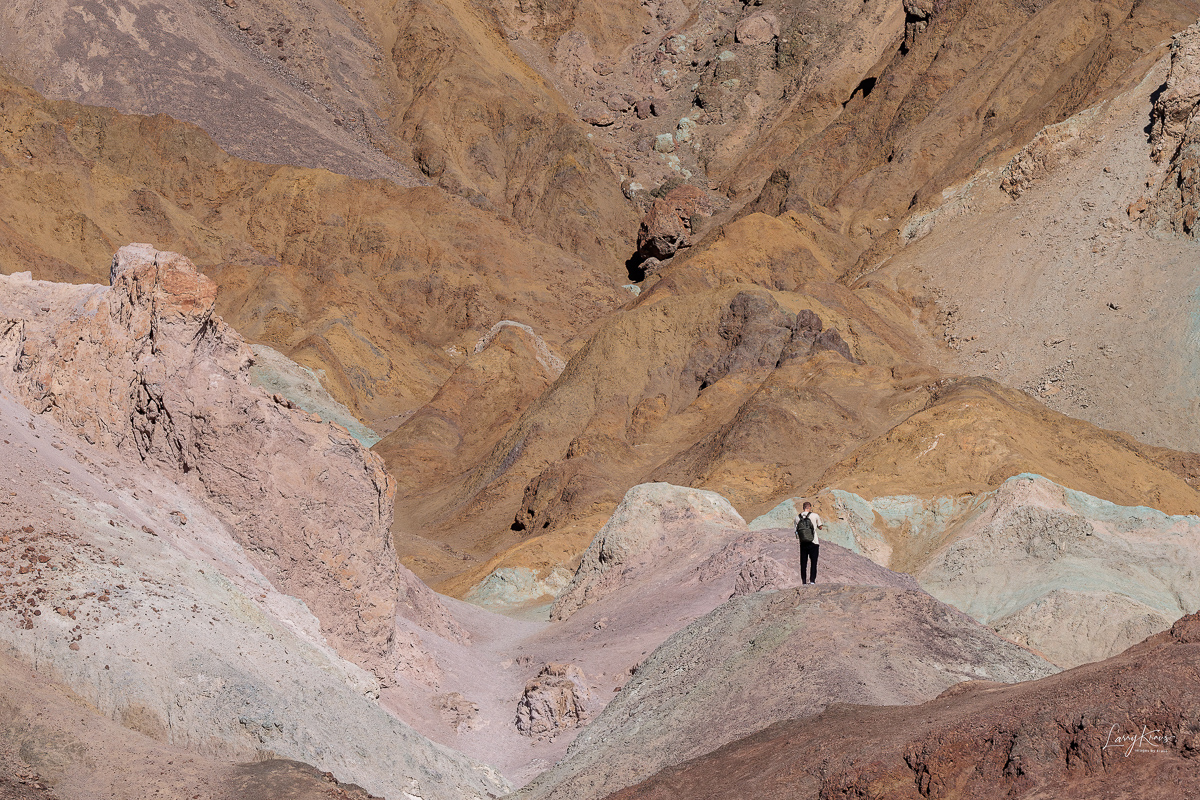
Standing Man
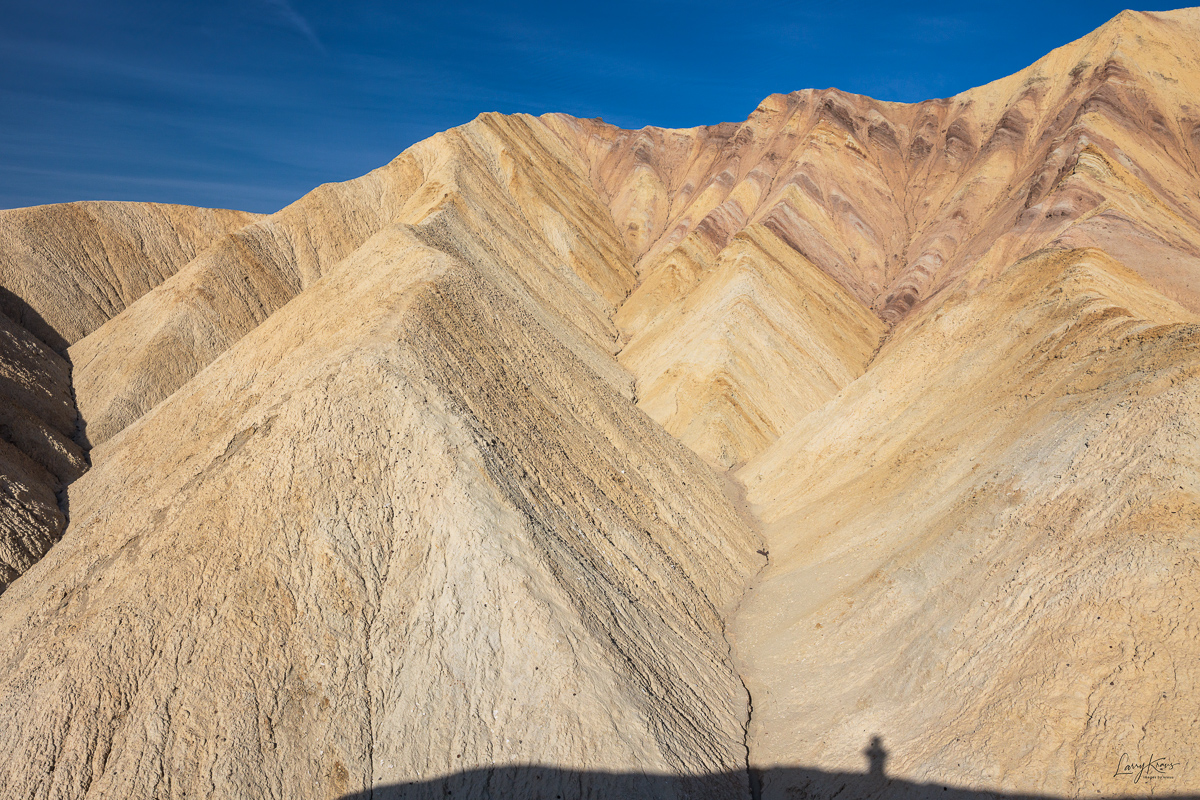
Golden Canyon Selfie
-
Avoid the popular viewpoints if at all possible. Or minimize your access of them. Zabriskie Point has a large parking lot and it’s usually full. You can shoot from the viewpoint, but inevitably, people walk out beyond it and you’ll find them in your viewfinder. Not fun (Standing Man above). But if you park along Highway 160 a mile or two southeast of the parking lot, you can hike into 20 Mule Team Canyon and find yourself all alone pretty quickly. There is also a one-way dirt road into the canyon you can take that isn’t nearly as busy as the viewpoint. The hills and colors here rival anything at Zabriskie Point.
-
Badwater features an incredible salt basin filled with small mounds of white sodium chloride that create interesting patterns, and which people love to walk out into. There’s a parking lot here, and a boardwalk conducive to getting you into the area. But once again, this can be a ridiculously busy area and filled with tourists and cell phone maniacs. I’ve noticed that professional photographers typically drive past the parking lot (south) about a half to one mile, park along the road, and walk in cross country. Depending on how wet the area is, you might want to bring along some boots. There’s also not likely to be anyone else there.
-
The Mesquite Sand Dunes can be particularly frustrating given the number of visitors who want to be out in them. Very difficult to get good shots here, and I spent much time after my first trip trying to edit the tourists out of my photos. Here’s a better idea: Don’t go anywhere near the parking lot for the sand dunes. Park about a mile before the parking lot (east) and, once again, hike in cross country. The traffic will be greatly reduced. As you can see from my photos, we avoided footprints and people totally. Be sure to be properly attired to be out there, with good hiking boots and plenty of water. You may have to negotiate some deep sand. Pick your route carefully.
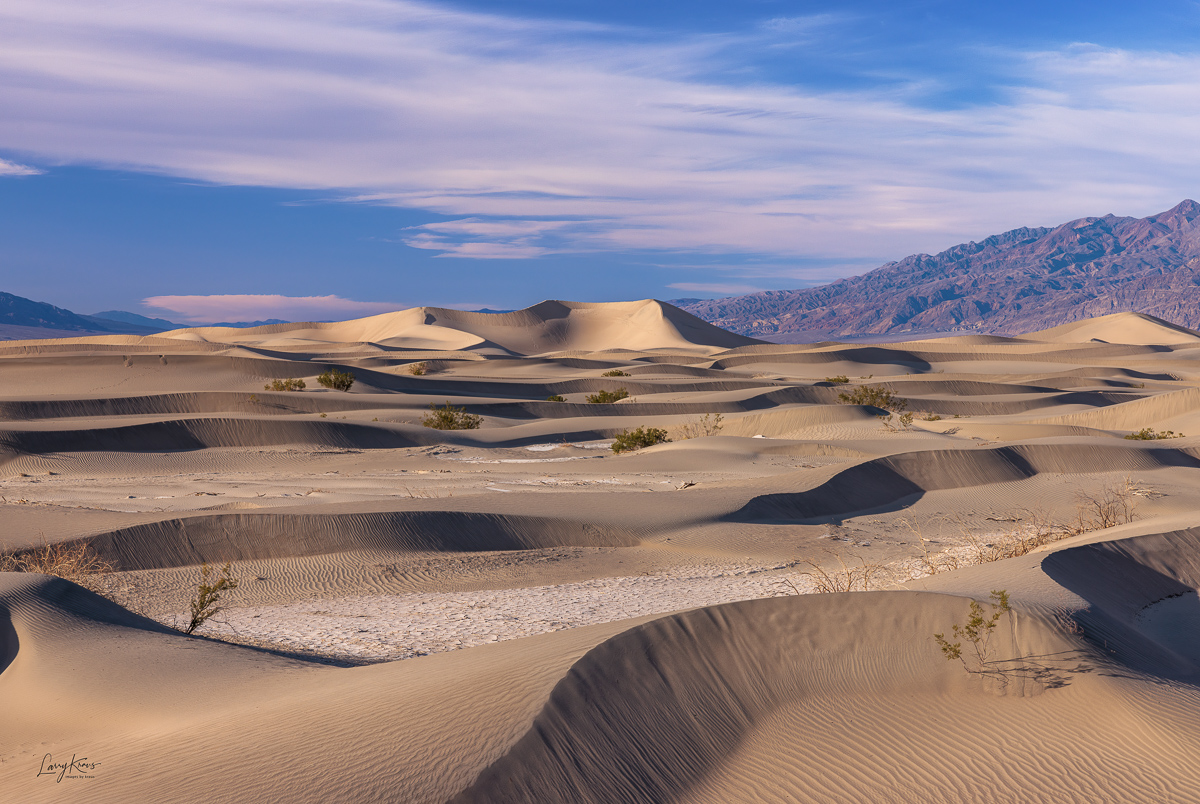
Dunes At Sunset
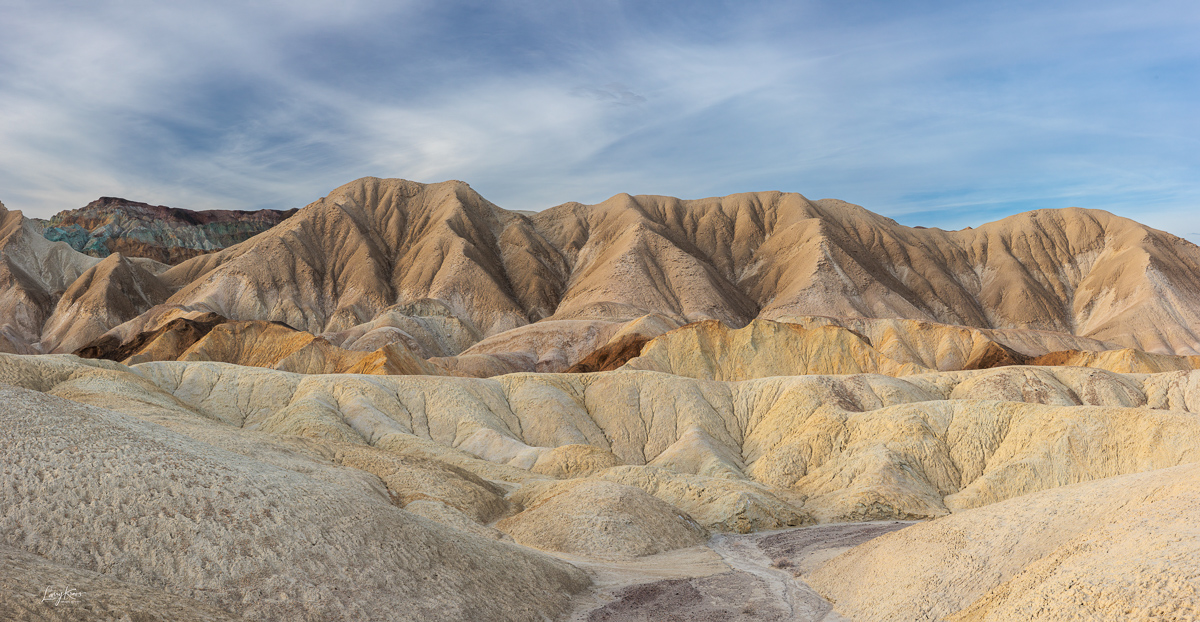
20 Mule Team Canyon Panorama
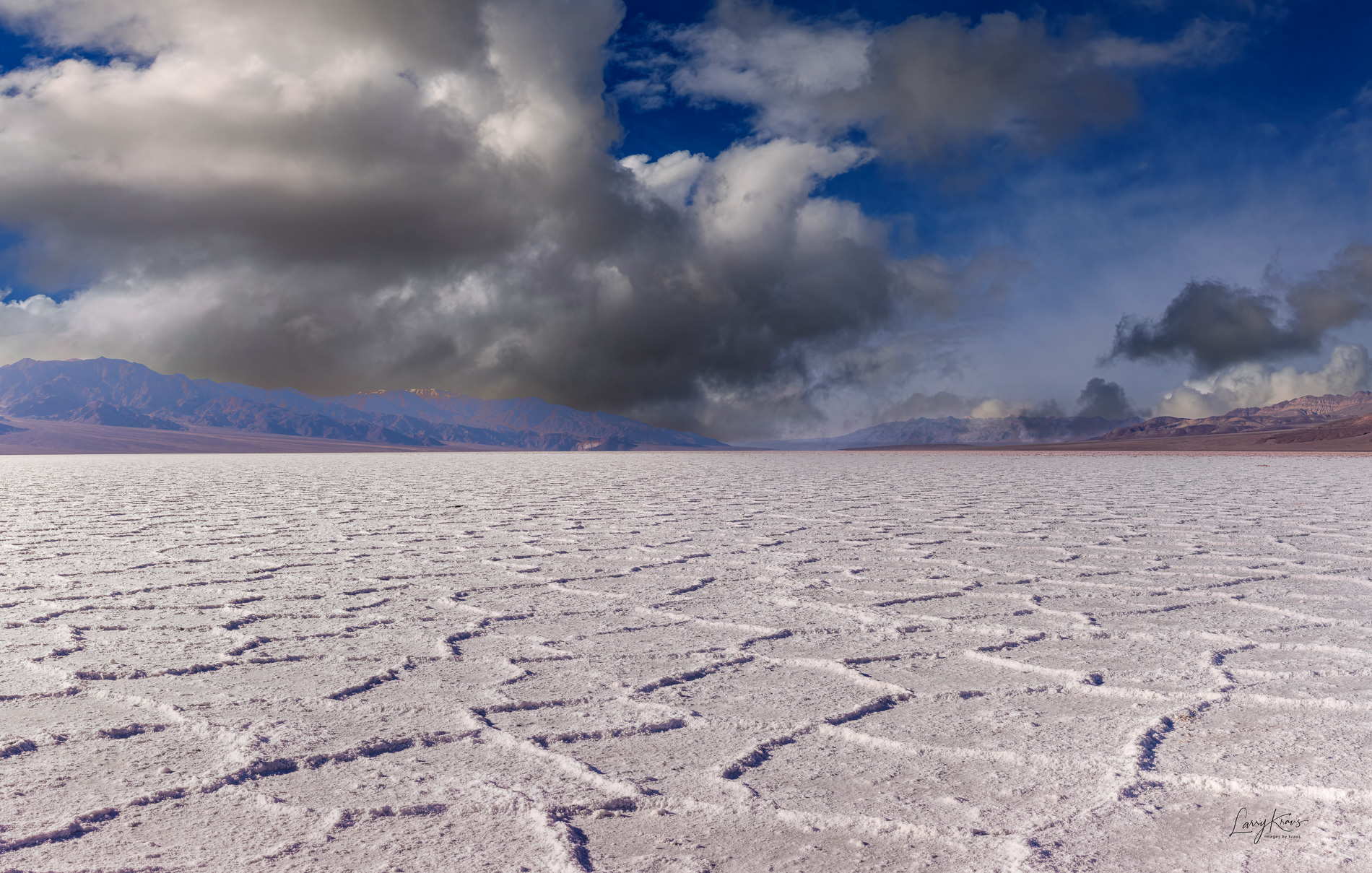
Badwater Basin – 280 Feet
Below Sea Level

